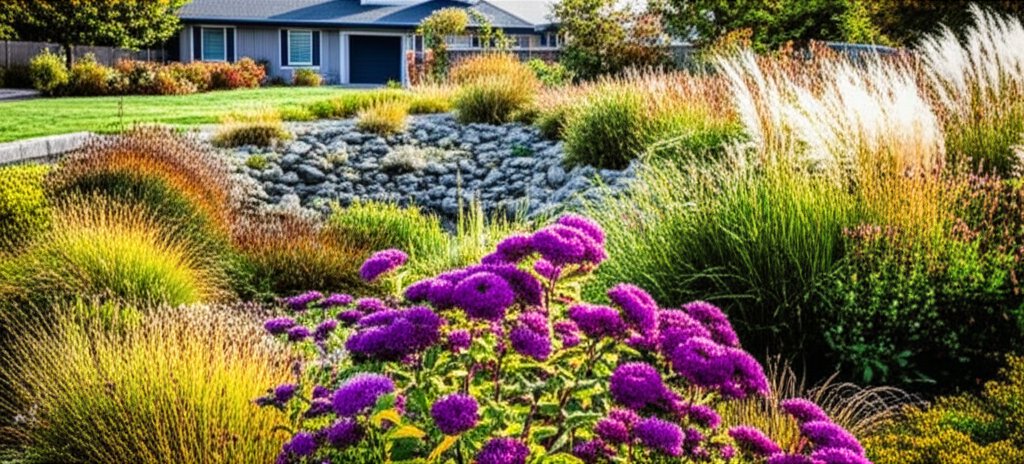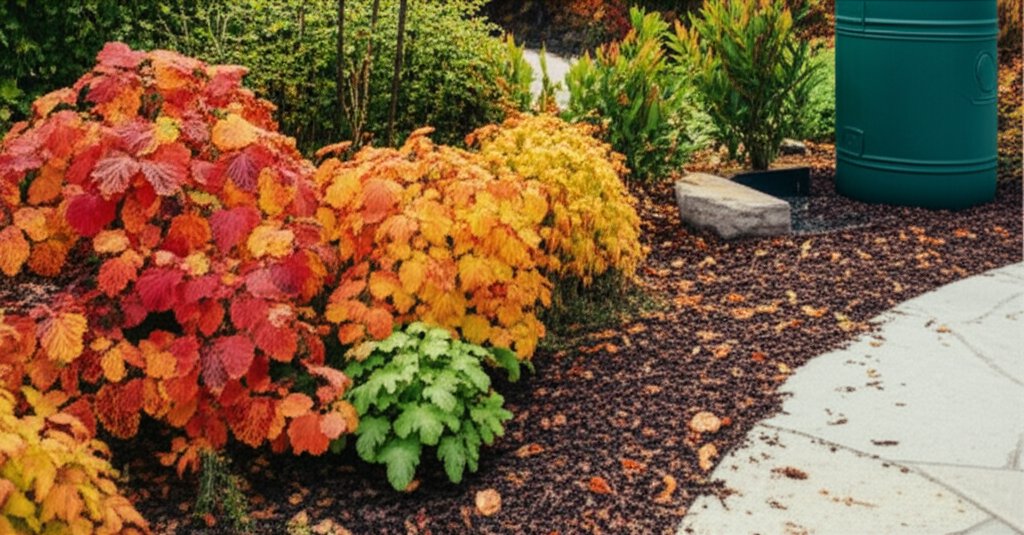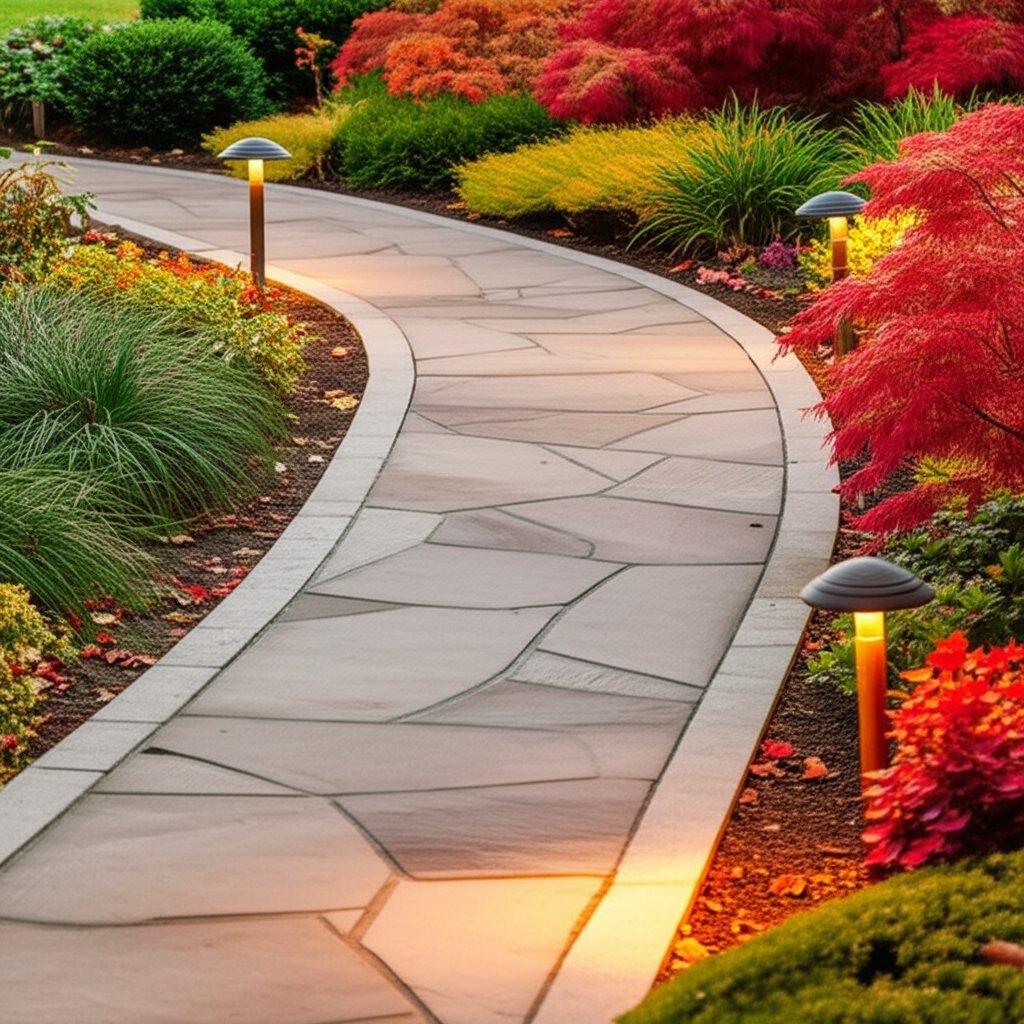Understanding Rain Gardens for Autumn Stormwater Management
Autumn rainfall often arrives in steady, abundant patterns that challenge typical yard drainage. Puddles form, soil becomes waterlogged, and excess water flows toward storm drains, carrying potential pollutants. A rain garden addresses these issues by intentionally directing and absorbing stormwater, allowing it to benefit the landscape instead of escaping unused.
This approach transforms seasonal challenges into opportunities for soil improvement and ecosystem support. Homeowners observe reduced erosion and healthier plant growth after implementation. The process begins with recognizing how water moves across the property during storms.
Defining a Rain Garden
A rain garden consists of a shallow basin planted with moisture-tolerant vegetation, including perennials, grasses, and shrubs. Positioned to receive runoff from impervious surfaces like roofs or driveways, it temporarily holds water for infiltration into the soil. Roots and soil layers filter impurities, preventing them from reaching waterways.
Unlike a pond, a rain garden drains completely within 24 to 48 hours, maintaining plant vitality and avoiding mosquito breeding. It functions as an efficient infiltration system, mimicking natural wetland processes in a controlled yard setting. Proper design ensures reliability across varying rainfall intensities.
Advantages of Autumn Installation
Autumn provides ideal conditions for establishing a rain garden due to moderate temperatures and moist soil. Heavy storms test the system's capacity while allowing plants to root deeply before winter dormancy. Established gardens perform robustly by the next growing season, handling increased precipitation with ease.
Soil remains friable for excavation, and cooler weather reduces transplant shock for new vegetation. This timing aligns with natural cycles, as falling leaves contribute organic matter to the site. Preparation during this season sets the stage for year-round functionality.
Selecting an Optimal Site
Observe water patterns during rain events to identify suitable locations. Note where runoff converges from downspouts, patios, or slopes. These areas indicate high potential for interception without major alterations.
Key considerations include:
- Maintain a minimum distance of 10 feet from building foundations to safeguard structural integrity.
- Steer clear of low-lying zones with chronic standing water, which suggest underlying drainage problems.
- Favor gentle slopes that direct flow controllably into the basin.
Site evaluation ensures the garden integrates seamlessly and performs effectively from the outset.
Shaping and Sizing the Garden
Opt for organic shapes like ovals or irregular curves to harmonize with surrounding landscapes. Depths typically span 4 to 8 inches, adjusted for local soil permeability and expected water volume. Sandy soils accommodate deeper profiles for faster drainage, whereas clay soils benefit from shallower basins to prevent saturation.
Scale the design to the runoff source; a compact garden suffices for a single downspout, while broader areas near driveways require expanded dimensions. Initial small-scale trials reveal performance insights before scaling up. Visual balance enhances the garden's appeal as a landscape feature.
Preparing the Soil Profile
Assess existing soil to determine amendment needs; clay-heavy profiles often require enhancements for better percolation. Blend native soil with equal parts sand and compost to create a permeable medium rich in organics. This mixture supports water movement while retaining essential nutrients for plant establishment.
Excavate the basin, incorporate amendments uniformly, and construct a subtle berm along the lower edge to retain inflow. Rake surfaces smooth for a polished appearance and apply 2 to 3 inches of organic mulch to suppress weeds and stabilize soil. These steps promote longevity and erosion resistance.
Selecting Plants for Performance and Aesthetics
Prioritize native, wetland-adapted species that endure fluctuating moisture levels. These choices align with regional climates, conserve water, and foster biodiversity by attracting pollinators and wildlife.
Recommended categories encompass:
- Grasses and sedges, including switchgrass and soft rush, for vertical structure and sediment trapping.
- Perennials such as coneflower, bee balm, and black-eyed Susan, providing vibrant blooms and insect forage.
- Shrubs like red osier dogwood and winterberry, delivering four-season interest and soil stabilization.
Arrange plants in clusters by height and texture for a dynamic, naturalistic composition. Space according to mature sizes to allow air circulation and root expansion.
Broader Environmental and Practical Gains
Rain gardens significantly curb pollutant-laden runoff, protecting local waterways from contamination. They replenish aquifers by facilitating groundwater recharge and alleviate municipal sewer burdens during peak events. In residential settings, they convert underutilized spaces into productive, low-maintenance zones.
Homeowners gain a deeper appreciation for hydrological processes through direct observation. Storms shift from nuisances to nurturing events, fostering sustainable yard management. These systems yield compounding benefits over time.
Ongoing Maintenance Strategies
In the establishment phase, monitor drainage and supplement irrigation during dry spells to aid root development. Remove weeds promptly to prevent competition with desired species. Annual tasks involve refreshing mulch, pruning spent growth in early spring, and inspecting for sediment buildup.
As the garden matures, it demands minimal intervention, self-regulating through robust plant communities. Seasonal adaptations ensure resilience: autumn replenishes moisture reserves, winter insulates roots, spring promotes regrowth, and summer showcases maturity. Consistent light care sustains peak performance.
Implementing Your Rain Garden Project
Commence with basic tools: a shovel for digging, wheelbarrow for soil transport, and measuring tape for layout. Outline the basin with string or spray paint, then excavate in layers to manage depth accurately. Test infiltration by simulating runoff with a hose to verify drainage rates.
Introduce plants immediately after soil preparation, watering thoroughly to settle roots. Document initial storm responses to refine future adjustments. Expansion occurs organically as confidence builds, potentially incorporating multiple basins across the property.
Sustaining Soil Health Through Seasonal Integration
A rain garden elevates autumn storms into a cornerstone of soil vitality, capturing nutrients that would otherwise dissipate. This practice not only mitigates environmental impacts but also cultivates a resilient, visually compelling landscape. Embrace the design as a long-term investment in ecological harmony and yard functionality.



